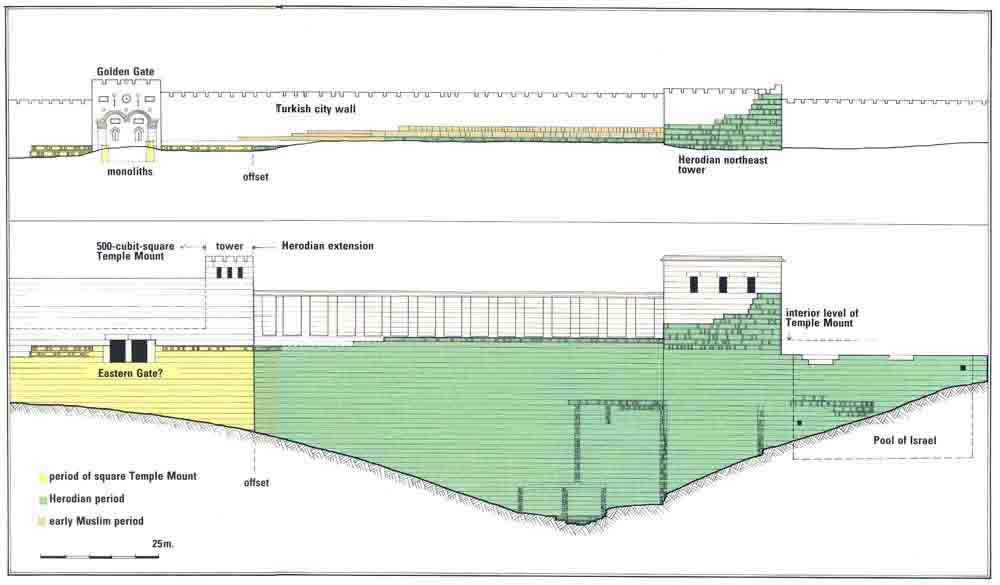Image Details

Leen Ritmeyer
The northern part of the eastern wall. The drawing shows this portion of the wall as it appears today (top) and as it may have appeared before and after the Herodian addition (bottom). (The Herodian addition begins at the offset and extends to the right.) The Golden Gate may have been built over the original Temple Mount’s Eastern Gate. Ritmeyer identifies two monoliths (large, upright stone blocks), visible only from inside the Golden Gate, as the jambs for the Eastern Gate. These monoliths are about 12 and 15 feet high. Ritmeyer also identifies the lowest course visible above ground on either side of the outside of the Golden Gate as sixth-century B.C.E. masonry from the time of Nehemiah, characterized by large, bulging bosses. The courses above this date to a later period. North of the offset (to the right) is Herodian masonry, marking the point where the northern Herodian extension begins.
